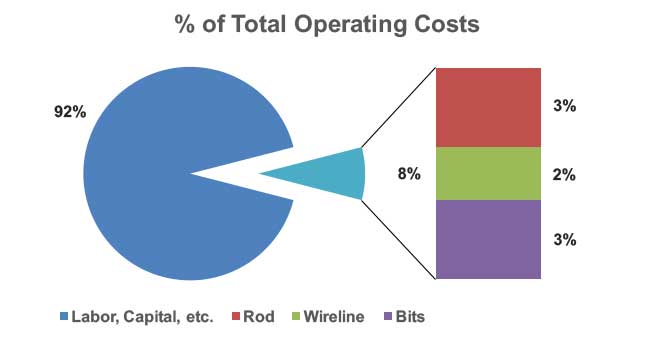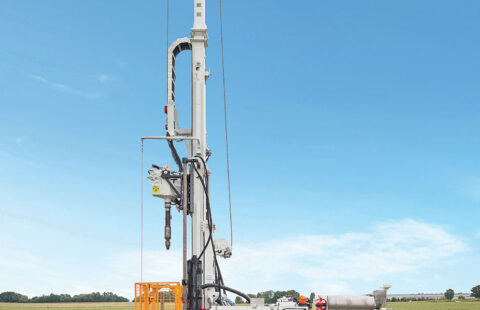
The hidden cost of cheaper drill rods
Conventional wisdom tells us that a penny saved is a penny earned. When it comes to buying drill rods, however, pinching pennies could end up increasing your operating costs and putting your reputation at risk.
Because of the significant expenditures involved with coring rods, it’s understandable why many contractors focus on purchase price when trying to minimize cost. For some buying decisions, that makes perfect sense.
But, just like when buying a new vehicle, it’s important to consider more than the sticker price. After all, the “real” cost of that shiny new vehicle comes down to the cost per mile – and that depends a lot on driving habits, fuel consumption, maintenance needs, potential for breakdowns and overall quality of the vehicle.
In our industry, the comparable measure is the cost per meter. And in reality, the quality of rods, hole condition and operational use have much more to do with the cost per meter of a rod string than the initial purchase price.
Here’s something to consider.
In a typical diamond coring operation, consumables amount to only 8 to 10 percent of a contractor’s operating costs. Coring rod is typically 40 percent of that amount, or about 3 percent of total costs.
So let’s say you buy coring rod that costs 25 percent less than a competitive product. Are you really saving anything? Maybe not.
First of all, consider the big picture. Spending 25 percent less on 3 percent of your operating expense is really a savings of less than 1 percent overall. In the whole scheme of things, that’s pretty small relative to total operating costs.
Because handling and use of coring rods during field operations drives cost far more than purchase cost, it’s important to look beyond the upfront cost.
Beyond joint strength and durability, how a contractor handles rod in the field has a huge impact on rod life and the chances of dropping a string, which in turn affect productivity. Having to redrill a hole or deal with unsticking rods costs precious time and can take a toll on both operating costs and your reputation with your client.
Given the uncertainties of shear zones, swelling formations, voids and other variables, even the most precise drilling technique can’t totally prevent stuck rods – just as careful driving can’t guarantee that you won’t get into an accident in that new vehicle of yours.
But having the strongest rod possible increases your chances of being able to pull out of the hole without breaking the rods and having to fish or drill them out. It’s like an insurance policy that will save you significant operating costs by avoiding more downtime when these situations do occur.
So if you’re really serious about minimizing costs and protecting your reputation, don’t pinch pennies. Be sure to use the highest-quality, strongest rod possible, such as Boart Longyear RQ™. With a lower cost per meter than any other rod in the market, it will help you get out of problems and save you money in the long run.
Source : https://www.boartlongyear.com/insite/hidden-cost-cheaper-drill-rods/




